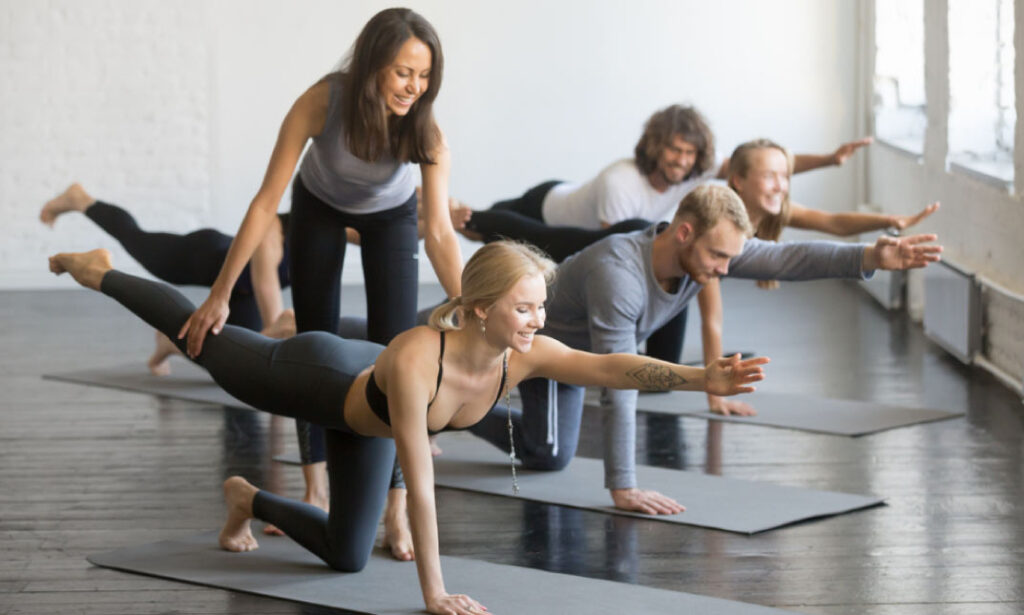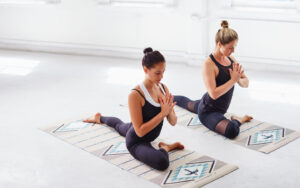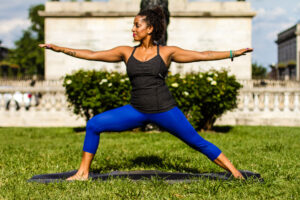
In addition to traditional fitness trends, there are also unusual types of fitness including https://www.julianalucky.com/post/crib-recall-everything-you-need-to-know-about-drop-side-cribs. They use non-standard equipment and exercises are performed in an atypical way. Aerial yoga is one of these original fitness routines.
Aerial Yoga
Among the many varieties of yoga, aerial yoga stands apart. It is noticeably different from other types of yoga and fitness. Here, all the exercises are performed above the floor: the trainee works in a special hammock attached to the ceiling. The athlete either does not touch the floor at all or is in a semi-suspended state. Hammocks for aerial yoga classes are long and wide canvasses painted in bright colors. Fitness trend, which combines the exercises performed in a hammock, called aero yoga or yoga anti-gravity.
A similar technique of exercises was offered by Iyengar – the famous master of yoga, the founder of one of the popular directions of Hatha yoga, which is called Iyengar Yoga. In Iyengar Yoga a variety of improvised aids are actively used to help people get into the right posture. But instead of the hammock here are used ropes, which are usually attached to the wall. They facilitate the performance of stretching poses. Kurunta yoga is the name of the Iyengar yoga exercises that are done with ropes (from the word “kurunta” – puppet).
Christopher Harrison, an American dancer and gymnast, suggested using the hammock in yoga exercises; he also developed a system of exercises on aerial silks and patented it under the name of Anti Gravity Yoga. Today, the system is constantly expanding with new exercises and complexes invented by numerous fans of aerial yoga. The AntiGravity program has many directions, but aeroga is considered the most popular.
What are the benefits of working out in a hammock?
The hammock is a must-have attribute of aeroyoga. While not all aerial yoga exercises are performed in a hammock, in some exercises the hammock serves only as a partial support to help increase stretching or alignment. What does the suspended position provide? When a trainee tries to do an asana in a hammock, he has to balance by tensing muscles which are not used much in everyday life. So, when you do asanas in the air, you can work the body from a different angle – very different than on the ground. Performing asanas in a suspended position effectively trains the vestibular apparatus and strengthens the whole complex of stabilizer muscles.
By practicing in a hammock, you can significantly reduce the load on the spinal column. Moreover, during aerial yoga classes it is possible to achieve such a stretching of the spine, which is not always achievable when doing exercises on the ground. It has been long noticed that exercises in a hammock are good for flexibility, and today there is a separate trend of anti-gravity fitness – aerostretching.
The hammock facilitates mastering of complex asanas, which include inverted postures. Upside down (inversion) postures have a powerful therapeutic effect and occupy an important place in yoga practice. But they are not easy to learn. Besides, they differ from other asanas with an increased danger of injury. However, this is true for those inverted postures, which are performed on the ground. In a hammock, as a rule, there are no problems in mastering them.
One more advantage of aeroga: it has a powerful relaxing effect. Spasmodic muscles stretch, the spine straightens and relaxes, and the joints lose an unnecessary load. The sensation of flying above the ground and gentle rocking of the hammock has a calming effect on the nervous system, distracts from anxious thoughts, reduces stress and improves your mood.
Anti-gravity fitness
In addition to aeroga, there is also aerofitness. This trend includes strength and cardio workouts in a hammock. They are much like training with TRX loops. Here, too, you have to balance in an unstable position while performing given movements. Only the support for the body is not suspended loops, but the hammock. Hanging in different positions on the hammock, you can vary the degree of strain or shift the load on certain muscle groups, while relaxing other muscles. Air fitness helps to pump up the muscles, improve body definition, eliminate flabbiness, and strengthen the cardiovascular system.
Workouts in hammocks are available to people of all fitness levels. You can work out in a hammock, even if you are overweight. Suspended design can withstand a load of up to 200 kilograms. Used air fitness and in rehabilitation activities – to recover from injuries and diseases of the musculoskeletal system. But the aerofitness classes should be conducted by a professional instructor.
Stretching in a hammock
Aerostretching is stretching on a hammock. Aerostretching focuses on improving joint flexibility and muscle elasticity. Using a hammock, you can perform stretching exercises with more comfort and efficiency than on the floor. For example, to stretch with a hammock can be as follows: throw one leg on the hammock and leave the other on the floor. The canvas will take the limb further, helping to deepen the twine. Stretching in the hammock is carried out without unnecessary stress. In the hammock is very convenient to perform all sorts of bends and flips. The spine is stretched better than on the floor, and neither it nor the surrounding muscles are not overloaded.
Fitness clubs usually offer separate aerostretching classes. However, aerial yoga classes also contain many stretching exercises. Stretching exercises are not only a tool for developing flexibility, improving spinal health and improving joint mobility. In addition, they are good for relieving accumulated tension, removing clamps and spasms, improving blood circulation, and calming the nervous system.